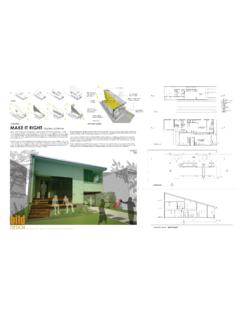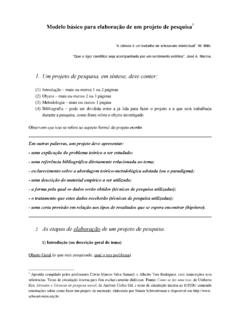Transcription of N 0 1 5 10 FEET MAKE IT RIGHT
1 MAKE IT RIGHT17 2 2 September 22-24: a hurricane strikes the city destroying most structures. St. Louis Cathedral is 79 Another smaller hurricane strikes the city. 1682 Frenchman Robert Caralier and Sieur de La Salle claim the future area of New Orleans and the surrounding areas for King Louis of France. 1718 New Orleans is founded by the French as La Nouvelle-Orl ans under direction of Jean-Baptiste Le Moyne de Bienville. The oldest cathedral in the US, St. Louis Cathedral, is built in New Orleans. 1762 New Orleans taken over by the 79A hurricane strikes the city.
2 The storm is very violent and many structures and crops are destroyed. 178 0A large hurricane strikes the city. Structures and crops are destroyed. 17 2 2 Planners implement a gridded city plan in the French corridor. The French corridor site is selected because of its abuncance of natural high to European settlement a little over 200 years ago, the area known as New Orleans today was occupied by Native American Indian populations for nearly 10,000 years. 178 8 The Great Fire of 1788: a large part of the city is burned to the ground.
3 856 buildings are destroyed. 17 76A hurricane strikes the of the city is 01794 Again, a large part of city burns to ground. 212 buildings are regains control of New Orleans from hurricane strikes the city producing hail. People, cattle, and horses are killed in the storm. 1815 Battle of New Orleans: Andrew Jackson leads French and Spanish settlers (with soldiers, slaves, militia, Indians and even pirates) to defeat British invaders. 1811A hurricane strikes the purchases Louisiana from Napoleon. New Orleans population is 10, hurricane strikes the Pontchartrain railroad is built.
4 1884 New Orleans hosts the World s Army Corps of Engineers is hurricane strikes just west of New Orleans and causes substantial damage to the city. 182118311893-1915 Several miles of levees along the Mississippi River are constructed. By 1920, over 15 million cubic yards of dirt have been swamp drained to create the Ninth Ward Orleans Drainage Plan of 1895: over the next 20 years a complex system of drainage is created throughout the area. 1870 New Orleans annexes the City of large Hurricane kills over 2000 in 19691979 1915 190918791982198519651982199219161855 NEW ORLEANSSITE PLANABC1234567891011121314 SOLAR SOUTH3 Growing Back SmallerWe believe that controlled urban re-growth, coupled with a strategic return-to-nature, will revitalize and enrich New Orleans while paving the way for a more sustainable future.
5 A shrinking city is in fact a denser, richer, more vibrant city. New Orleans will not endure without a broad, macro-scale vision that addresses and synthesizes the region s unique social, cultural, economic and ecological conditions. We have responded to the Make It RIGHT Foundation s initiative ..to be a catalyst for redevelopment of the Lower Ninth Ward, by building a neighborhood comprised of safe and healthy homes that are inspired by Cradle to Cradle thinking, with an emphasis on high quality design, while preserving the spirit of the community s culture, with what we consider a micro-scale solution to the region s problems a prototype for a single family dwelling that addresses the immediate and critical need for safe and healthy housing in the Lower Ninth Ward.
6 Our design for this prototype proposes a self-sustaining structure designed to function independent of civic infrastructure and services and to survive the inevitable environmental dangers of the area without catastrophic damage and loss of life. While our design provides an intelligent solution that can accelerate recovery in this specific district of the city, it is also connected to a much broader, longer term planning concept for the entire region. We envision that this prototype would facilitate a strategy for transforming and micro + MACROMIR Floating HousePrior to European settlement little over 200 years ago, the area known today as New Orleans was occupied by Native American Indian populations for nearly 10,000 years.
7 First visited by Europeans in 1541 when Spanish explorers discovered the Mississippi River, permanent European settlement began when the French claimed the territory in 1682. B y t h e e a r l y 18 t h c e n t u r y, N e w O r l e a n s c i t y f o u n d e r, J e a n - B a p t i s t e L e M o y n e de Bienville, initiated the first urban development in what remains today the Vieux Carre. Decreed a city by Bienville in 1718, New Orleans was 18th century New Orleans sustained damage from at least ten hurricanes of varying magnitude and his book, New Orleans: The Making of an Urban Landscape, geographer, Peirce Lewis, described New Orleans as an inevitable city on an impossible site.
8 In 1803, with the signing of the Louisiana Purchase Treaty, the United States acquired significant territories from France, including New Orleans, at roughly 3 cents per acre. New Orleans population in 1803 was laid out by the French engineer, Adrien de Pauger, in a classic eighteenth-century symmetrical gridiron pattern consisting of 66 squares forming a parallelogram. Responding to the area s existing natural conditions, this early gridded development occurred on sites of natural high ground. In November 1721, New Orleans had a population of 470 people: 277 whites and 172 black and 21 Indian slaves.
9 Approximately 8,000 including 4,000 whites, 2,700 slaves and 1,300 free blacks. In 1805, New Orleans was incorporated as a city and despite the numerous dangers and challenges presented by the area s natural geography and geology, continued to urbanize with development expanding on high ground adjacent to the Mississippi River. As the city expanded out of its original limits, one of the first new tracts of land to be added was the Faubourg Sainte Marie, a suburb lying on the uptown side of the Vieux Carr and separated from it by a broad commons (now Canal Street, New Orleans main street).
10 The Faubourg Sainte Marie became the American section in the early 19th century and the hub of most business activities. Other faubourgs (outskirts, or suburbs) were laid out above and below the two nuclear settlements and across the river and were finally absorbed into the city by the 1870s. - Encyclopedia BritannicaNew Orleans sustained damage from nearly a dozen notable hurricanes in the first half of the 19th one of the nation s key economic trade ports, New Orleans experienced a golden age of growth and prosperity through the middle of the 19th century.









